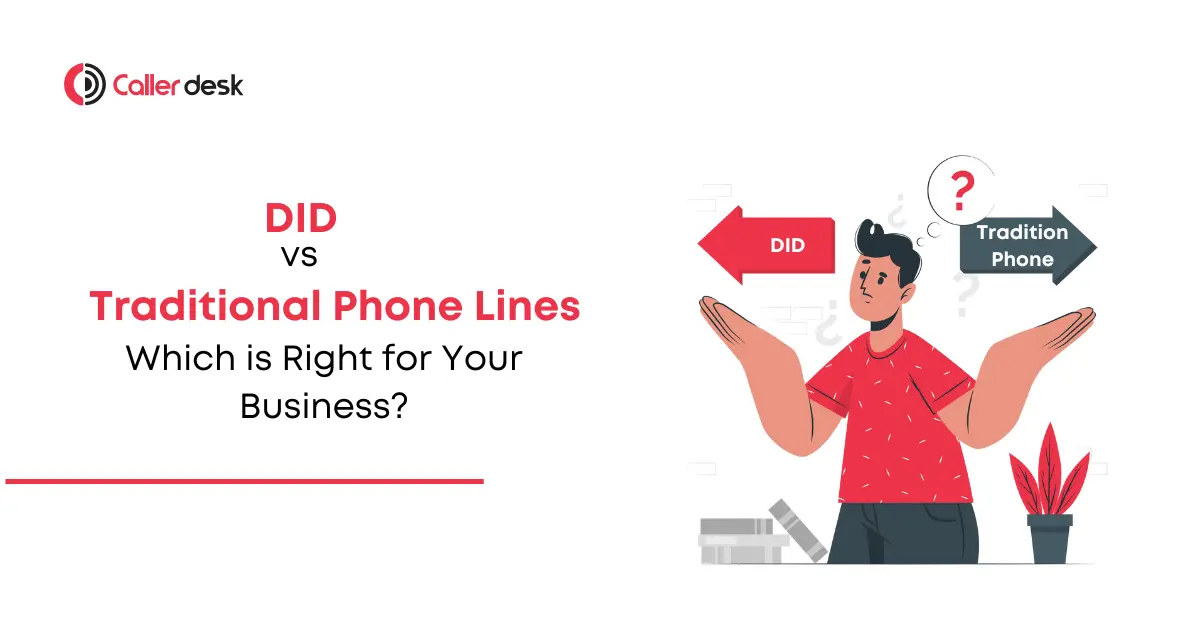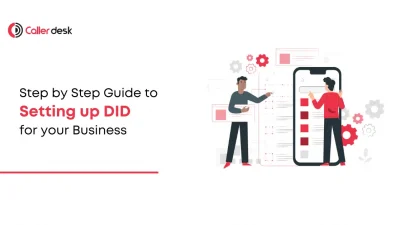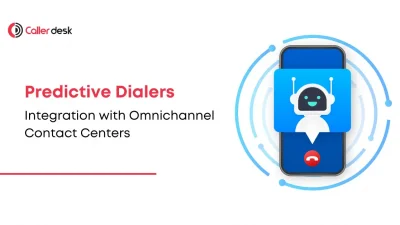Is your current communication system helping your business thrive? In today’s fast-evolving world of business phone systems, the right choice between Direct Inward Dialing (DID) and traditional phone lines can greatly impact your customer experience, cost efficiency, and brand image.
But which one is best for your business needs?
Both options offer unique advantages, and understanding their strengths, limitations, and use cases can help you make an informed decision. In this guide, we’ll explore the key differences, benefits, and scenarios where each system works best, helping you choose the right solution for your business.
What Are DID and Traditional Phone Lines?
Direct Inward Dialing (DID)
DID allows businesses to assign unique phone numbers to employees or departments without requiring separate physical lines. Calls are routed through a single connection, making communication seamless and cost-effective.
Example:
A growing IT company assigns unique numbers to its support, sales, and billing departments using DID. Customers can reach the right team directly without navigating menus or waiting on hold.
Traditional Phone Lines
Traditional phone lines rely on physical copper wires to connect each phone number. Each number typically requires its own dedicated line, offering reliable but less flexible communication.
Example:
A family-owned bakery uses a traditional line to handle a small volume of orders and inquiries, ensuring simple and reliable communication for their customers.
Benefits of DID for Businesses
1. Cost Efficiency
DID allows multiple numbers to operate through a single line, reducing infrastructure costs significantly.
Scenario: A startup with 30 employees uses DID to provide each team member with a direct number. This eliminates the need for separate phone lines and cuts costs by 50%, enabling the startup to reinvest those savings into growth.
2. Scalability
With DID, you can easily add or remove numbers as your business evolves, ensuring your communication system adapts seamlessly.
Scenario: A digital marketing agency experiences a surge in business during seasonal demand. By adding new DID numbers for temporary employees, they efficiently scale up operations without any technical hassle.
3. Professionalism
Assigning unique DID numbers to employees or departments gives your business a professional and credible edge.
Scenario: A customer calls a direct number for product inquiries and is immediately connected to a knowledgeable sales expert. This direct connection boosts the customer’s confidence and strengthens their perception of the business.
4. Enhanced Customer Experience
DID eliminates the need for hold times and ensures customers are routed directly to the right person or team, improving satisfaction.
Scenario: A healthcare clinic assigns DIDs to doctors and nurses, allowing patients to reach the appropriate professional directly. This streamlined approach reduces wait times and enhances the overall patient experience.
Benefits of Traditional Phone Lines for Businesses
1. Reliability
Traditional phone lines are known for their stable connections, making them a reliable choice, especially in areas with limited internet or inconsistent VoIP services.
Scenario: A rural manufacturing unit relies on traditional lines to maintain clear and uninterrupted communication with suppliers and clients, even in areas with weak internet infrastructure.
2. Simple Setup
Traditional phone lines are easy to install and require minimal technical expertise, making them perfect for smaller businesses or those new to advanced communication systems.
Scenario: A local bookstore sets up a traditional line to handle reservations and inquiries without needing to invest in complex telephony systems or technical staff.
3. Direct Calls
With traditional phone lines, calls are direct and simple—no routing, no menus, just clear communication. This is ideal for businesses focused on one-on-one interactions.
Scenario: A single-office law firm uses traditional lines to ensure personalized and direct client interactions, creating a professional and accessible communication experience.
DID vs. Traditional Phone Lines: Key Differences
| Factors | Direct Inward Dialing (DID) | Traditional Phone Lines |
| Cost Efficiency | Cost-effective; multiple numbers operate on a single line. | Higher costs; each number requires a separate line. |
| Scalability | Easily scalable for growing businesses. | Requires new physical lines for expansion. |
| Flexibility | Supports unique numbers for employees or departments. | Limited flexibility; suitable for basic communication. |
| Customer Experience | Enables direct connections, reducing wait times. | Central lines may lead to longer wait times. |
Which Is Right for Your Business?
1. For Small Businesses or Startups:
Direct Inward Dialing (DID) is a budget-friendly way for small businesses or startups to establish professional communication without hefty investments in infrastructure. It allows businesses to assign direct numbers to team members or departments, enhancing efficiency and accessibility.
- No need for multiple phone lines; one system manages multiple extensions.
- Cost-effective scalability as your team grows.
Example: A tech startup can use DID to set up separate numbers for sales, support, and billing, projecting a larger, more professional image while keeping costs low.
2. For Businesses Prioritizing Reliability:
Traditional phone lines are the go-to option for businesses that operate in remote areas or industries where uninterrupted communication is non-negotiable. These lines offer unmatched stability, even in locations with poor internet connectivity or frequent outages.
- Dependable voice communication regardless of internet reliability.
- Minimal downtime, ensuring consistent operations.
Example: A rural logistics company relies on traditional lines to coordinate with drivers and clients, ensuring clear communication without the risk of dropped calls.
3. For Customer-Centric Businesses:
DID’s ability to route calls directly to the right person makes it perfect for businesses focused on reducing wait times and enhancing customer satisfaction.
Examples to Help You Decide
1. Nationwide Retailer
Need: Handle a high volume of customer inquiries for orders and returns across multiple locations.
Solution: DID is the perfect choice. Assign unique numbers to each department—like sales, returns, and support—to route calls directly to the right team.
Example in Action:
An online retail chain assigns separate DID numbers for order tracking and refunds. Customers get directed to the right team instantly, cutting wait times and enhancing service quality.
2. Local Florist Shop
Need: Manage calls for bouquet orders and delivery coordination without extra complexity.
Solution: Traditional phone lines. A single line is cost-effective and easy to use for businesses with low call volumes.
Example in Action:
A neighborhood florist uses one traditional phone line to manage daily orders and inquiries. The simple setup works perfectly for their small-scale operations.
3. Logistics Company: Urban and Rural Communication
Need: Reliable communication across urban offices with high call volumes and rural branches with limited internet connectivity.
Solution: A hybrid approach. Use DID for urban locations to route calls efficiently, and traditional phone lines in rural areas for consistent communication.
Example in Action:
A logistics company uses DID for urban offices to manage customer orders and fleet inquiries while traditional phone lines support rural branches to coordinate with drivers effectively
Why Choose DID with Callerdesk?
As India’s leading cloud telephony provider, Callerdesk offers comprehensive DID solutions tailored to your business’s needs.
Why Callerdesk?
- Scalability: Easily add numbers as your business grows.
- Advanced Features: Seamlessly integrate with CRM, IVR, and analytics tools.
- Reliable Support: Get 24/7 assistance to ensure smooth implementation and operations.
Conclusion
Both Direct Inward Dialing (DID) and traditional phone lines offer unique advantages for different business scenarios.
- Choose DID for flexibility, cost efficiency, and scalability, ideal for modern businesses focused on customer satisfaction.
- Opt for traditional lines when simplicity and reliability are key priorities, especially in areas with limited internet access.
Upgrade your communication system today with Callerdesk’s customizable DID solutions. Ensure seamless communication, enhance customer experience, and project a professional image!
Ready to Transform Your Business Communication?
- Get Started Today: Schedule a free consultation with Callerdesk’s experts.
- Exclusive Offer: Enjoy a free trial of our DID solutions—limited-time only!
Frequently Asked Question
What is Direct Inward Dialing (DID)?
DID enables businesses to assign unique numbers to employees or departments, allowing direct connections without requiring separate lines.
How do traditional phone lines differ from DID?
Traditional lines use separate physical connections for each number, while DID uses a single connection for multiple numbers.
Which is more cost-effective for growing businesses?
DID is generally more cost-efficient as it eliminates the need for multiple physical lines.
Can I use both DID and traditional lines?
Yes! Many businesses combine both systems to address diverse communication needs
Why choose Callerdesk for DID solutions?
Callerdesk provides scalable, secure, and customizable DID services with 24/7 support for seamless implementation.





